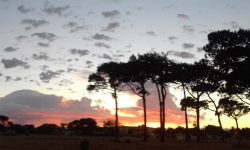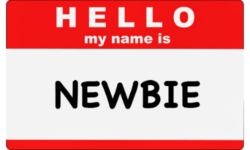
Restoring Healthy Natural Vision requires a mindset of living in the moment.
“Outward Awesome Connectivity”. The choice and intent to witness the eyes full capacity to see.
Natural Vision Improvement is a process combining a number of Vision Fitness Skills; empowering our focusing ability and our mindful processing ability – dynamic adaptability. These skills are often compromised in two dimensional activities or working-lifestyles staring at a pixelated flat screens of all sizes possibly for hours at a time; and also certainly rapidly lost with total dependence on optical correction devises.
#1 Just schedule a weekly nature walk. This sunrise image is in my local park – Cape Town where energizing daylight dramatic changes within ten minutes. The intensity of colour textures and shadows become alive – experience the detail.
#2 This choice is for free – I invite you to test the water. Your mindful commitment in terms of time and energizing impact will prioritize this journey. These are all cash flow costs – a return on your investment!
#3 The walking sets up rapidly changing spatial relationships framed by contrasting shapes, colours and light intensity. N.B. Eyes were designed to see movement. In a full field of view [its actually 220 deg ] a context that includes blurred peripheral vision – notably reduced with specs. A 10 – 20 minute nature walk can refresh the body, mind and spirit; the eyesight practices will reintroduce perspective and ultimately stereoscopic vision; requiring balanced left-right eyed vision.
#4 Just start… the pace of life requires stopping { frequently } and smelling the roses – 2 minutes shifts your heart set. The Method implies “exercises” but these are guides to relaxed attentive dynamic flexible focusing Vision Fitness skills. When practiced these reawaken memory of youthful sightseeing activities… Serious close-up imagery – the distance traveled moment by moment making a 2 minutes a journey of discovery. Visually connect in detail -even if blurred now- with each step… blink more frequently note your thinking patterns reconnect with the sensory visual environment!
#5 The work or challenge in restoring healthy vision is to practice three aspects:– A) View at ‘three different’ – distances – B) 3 Lighting conditions – and C) Witnessing the differences of left, right and combined eye perception known as acuity. Just simply observe objectively what was seen before, during and after the practice. Tired and dry eyes can be … see below.
#6 Eyes can be refreshed in minutes with three different restorative practices: splashing the eyes, palming and acclimatizing to bright lighting conditions. That is blood circulation and maximizing iris adaptability [pupil size] photo-sensitivity. Our eyes have many camera like qualities – blinking is part, video scanning – zooming in on detail. And a digital memory!
#7 A road map [theory ] requires informative [practical] signposts for changing vision habits and preparing you for practices to complement a walk in the park . Watch this space.
#8 Contact me for FAQ’s more information of the practices and courses available. A Vision Educator uses a questionnaire to establish an individual’s starting point; and acts as a coach to empower you for action. Also will provide information to respond to queries from your family’s, associates, colleagues querying your independent alternative choice to follow NVI principles.
#9 Keep your eye on the ball, blink more frequently and enjoy movement in each moment. Connect to the awesome environment you have chosen to do this walk. Start a journal of your experiences easily forgotten within 72 hours and questions for your vision improvement coach.
Reconnecting with clear sightedness can be as simple as a walk in the park!
At 22 a Vision Educator coached me back to 20/20 vision in 5 weeks and my dyslexic condition evaporated.
Wearing specs to correct astigmatic myopia crushed my self-esteem at 13.
As a craftsman-architect my lifestyle balances left and right brain’s perception. I often work 8+hours daily in front of a computer designing.
It’s fun unwrapping vision fitness skills and transformational for students intent on restoring sight naturally. Bates_method@mweb.co.za


Obviously, the same prideful masonic evil style of the grand master.
Christopher, thank you again. I am looking forward to Walk In The Park Two! Yes, I’m well aware of the importance of breathing. Sometimes I tell my anxious clients, whom I can tell are breathing shallowly and don’t know it, to take some deep slow breaths, and to feel like their eyeballs are breathing in and out at the same time, exchanging energy with the atmosphere. Anything which helps folks become more aware and present, has my vote! Keep up the good work.
Yes, I’m well aware of the importance of breathing. Sometimes I tell my anxious clients, whom I can tell are breathing shallowly and don’t know it, to take some deep slow breaths, and to feel like their eyeballs are breathing in and out at the same time, exchanging energy with the atmosphere. Anything which helps folks become more aware and present, has my vote! Keep up the good work.
Christopher, what a delightful and intriguing series of comments on this page! I especially enjoyed your comments on Cape Town. I have only been there once, and that is when we left Table Bay for the US in 1975. (I was born in Swaziland, and spent a couple of years there; Mt. Frere, Vryheid Kwazulu, and the rest on the Reef, 21 years total). I love Cape Town! I love the view from the Bay as well as Table Mountain.
I found #6 so true, and very helpful . . . “. . . blood circulation and maximizing iris adaptability [pupil size] photo-sensitivity. Our eyes have many camera like qualities – blinking is part, video scanning – zooming in on detail. And a digital memory!” Wow! How helpful! When I was in South Africa I belonged to a Photo Club in Kempton Park, in Gauteng, and learned from the group there. (A very long time ago!) I am not as good on the phone cameras as I was on my 35 Telephoto SLR! But I really “get it” – because I am older now!
Thanks!!!
Christopher, thanks. This is excellent — simple, clear, and helpful. I go for a walk after dinner every evening to clear my mind and let my vision roam free. I always come back with better eyesight, and a better attitude.
Paul everybody sees better in bright daylight… and its in colour too. 6 million pixels. our flat screens rarely have more than than 2000 pixels so we need to see those pix-elated flat screens with far greater detail. Our vision perception needs to be challenged in lower light conditions. As the “digital ability” can reduce the aperture to f 32 momentarily to clear the blur see more in focus at the same time. Palming does that opens the aperture to f 1.8 and on uncovering the eyes over compensates momentarily – this can be seen in a mirror shielding the light as the left and right irises adjust independently. Over sensitivity to light can usually be remedied by ‘sunning’ which reduces the muscles facial tissues eventually becoming wrinkles. Sunning behind closed eyelids can be done in 20 second doses. Note the effect of colour intensity after this practice. Always chose to wear a brimmed hat or peak cap rather than sunglasses while walking. Daylight regulates our internal systems.
Use the walk Nancy to do some deep regular breathing intentionally; often very shallow or tense lost in our daily un-measured lives. Its important to practice various recovery procedures for eyesight. Sound and being in touch are more profound than sight! Ask questions of the experience the awesome perception powers of the blind. Helen Keller came back to life with connecting to the touch feel of water. As a craftsman hearing and touching are as important and confirmed by sight. All of our senses balanced provide intuitive knowledge.